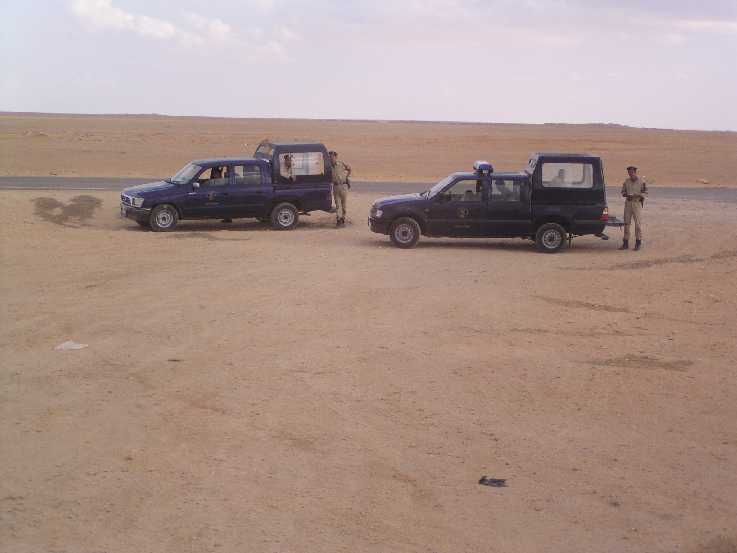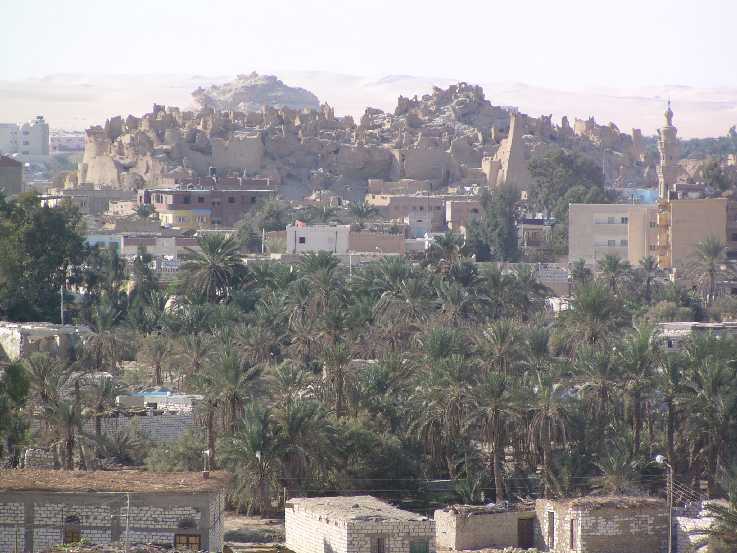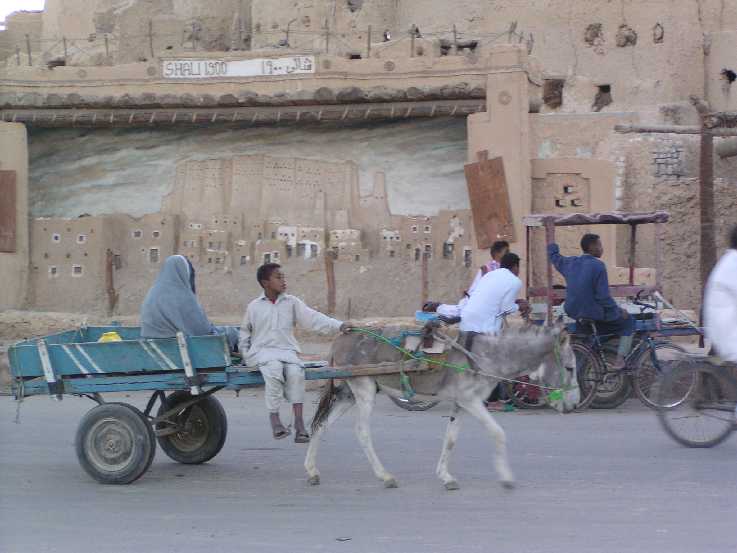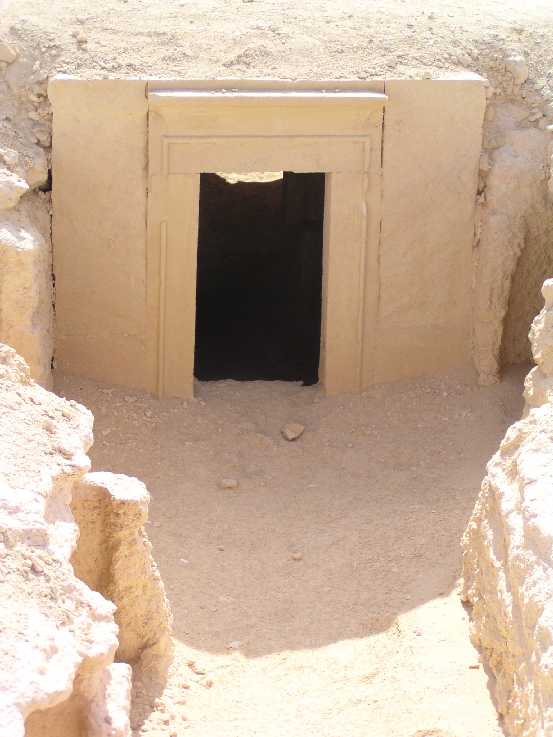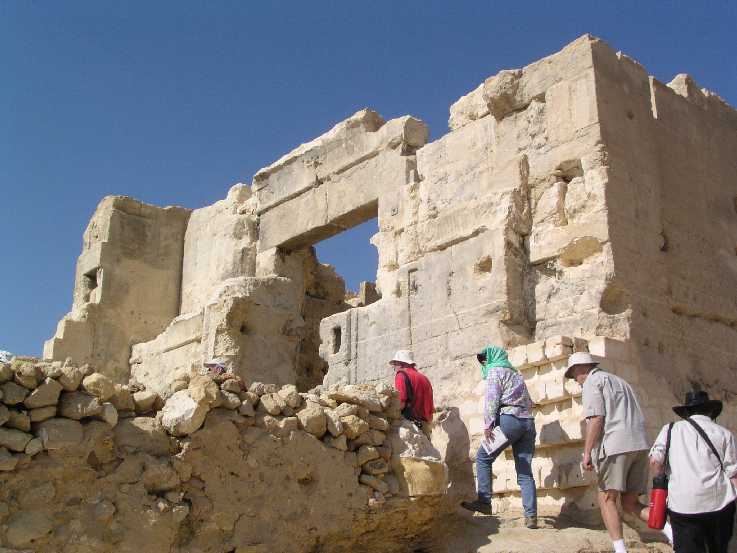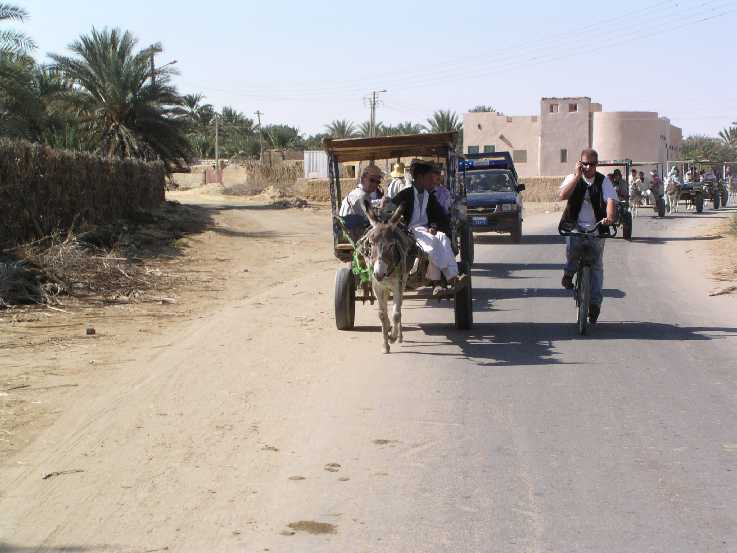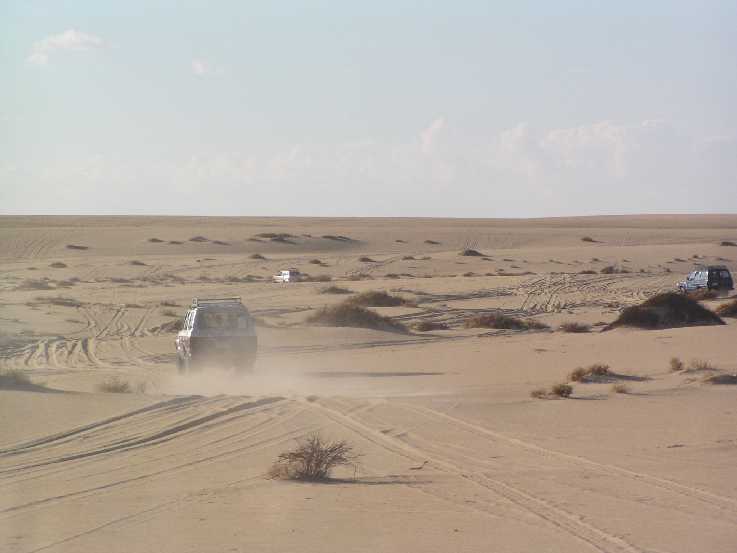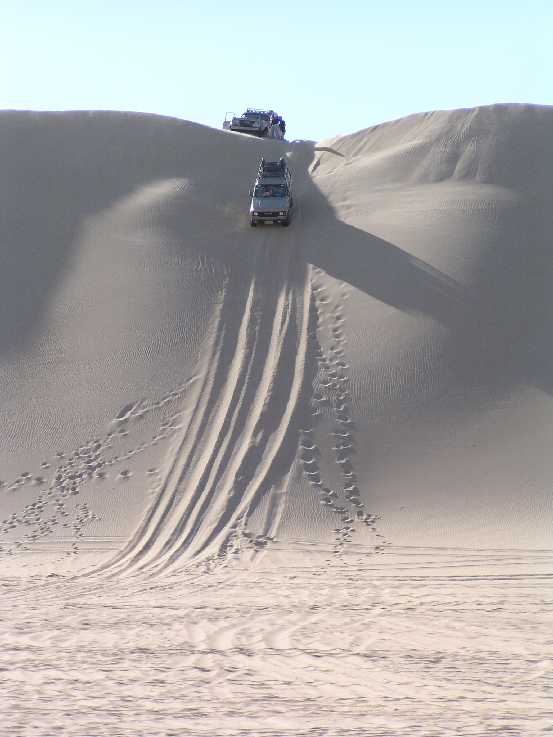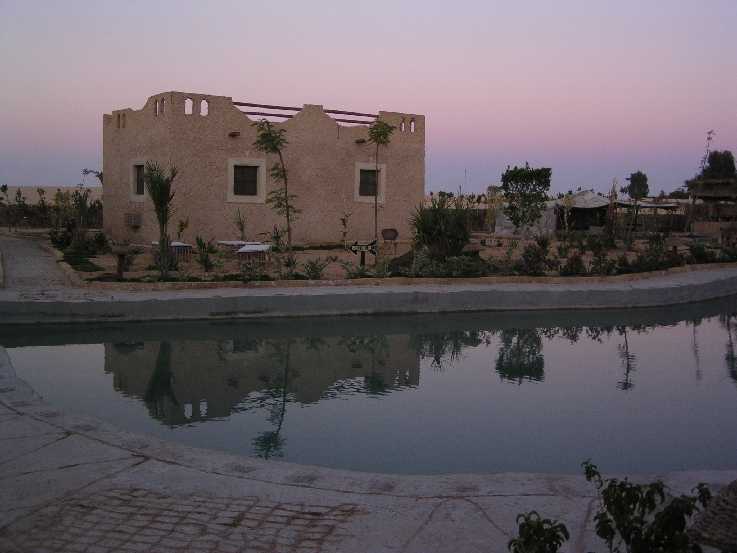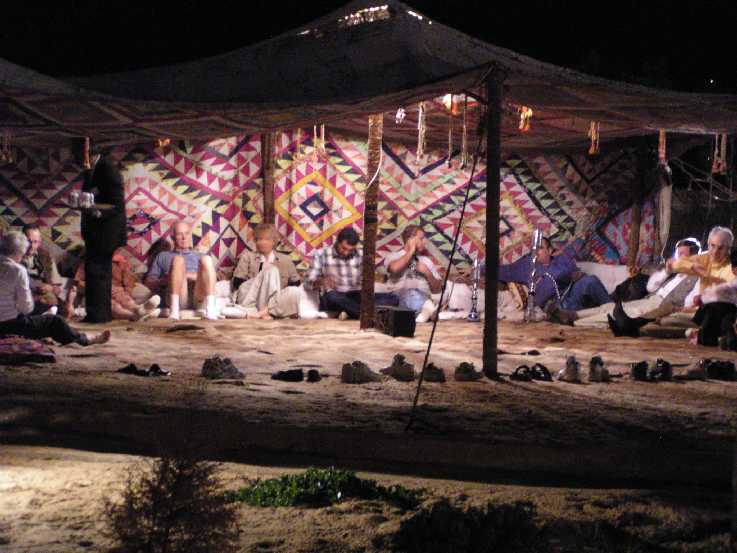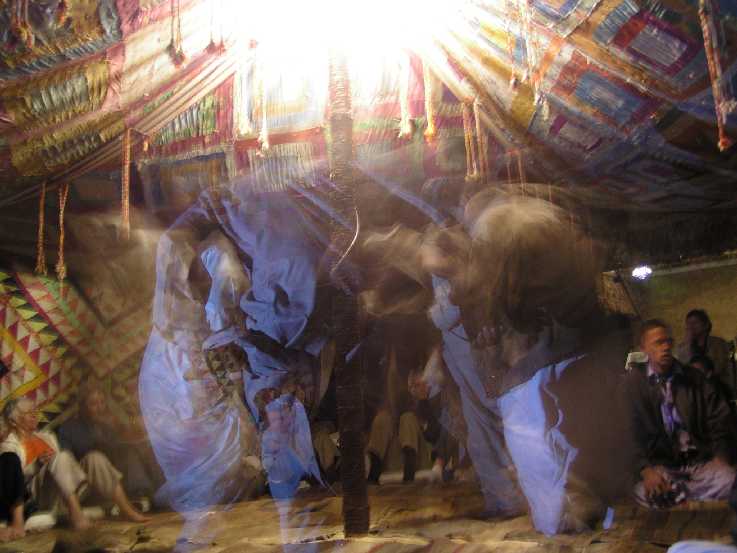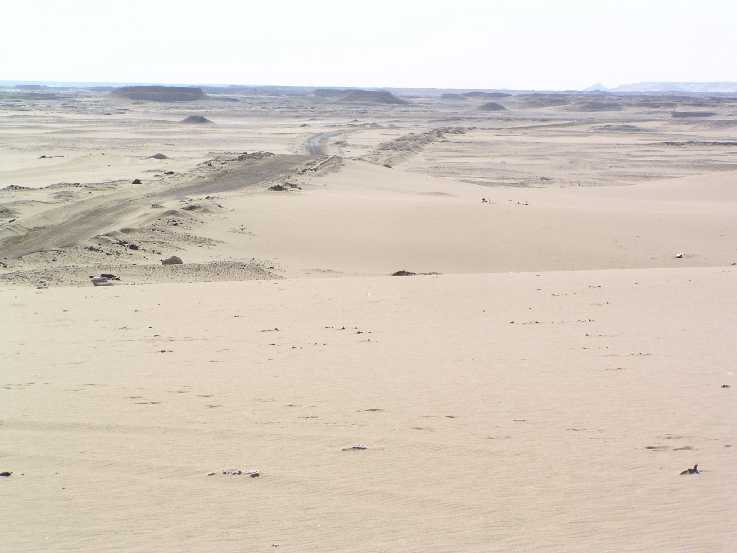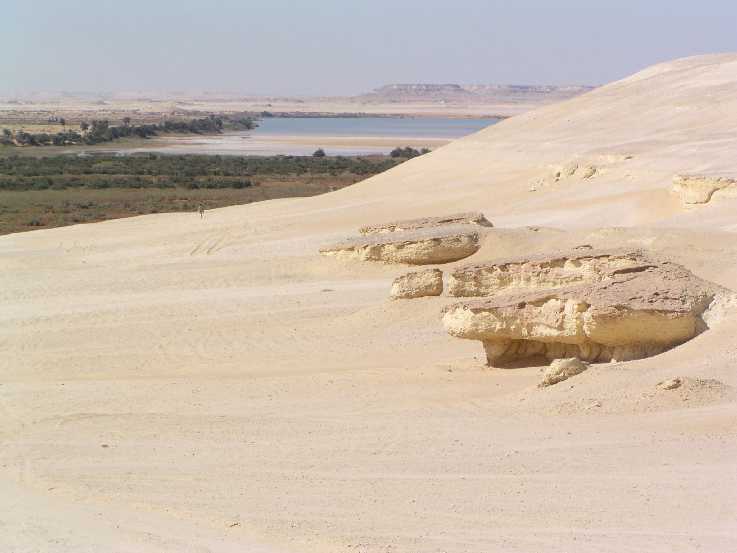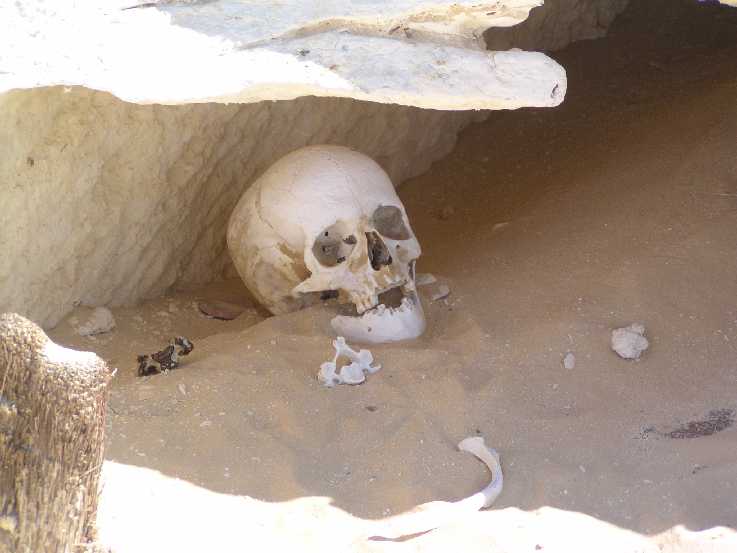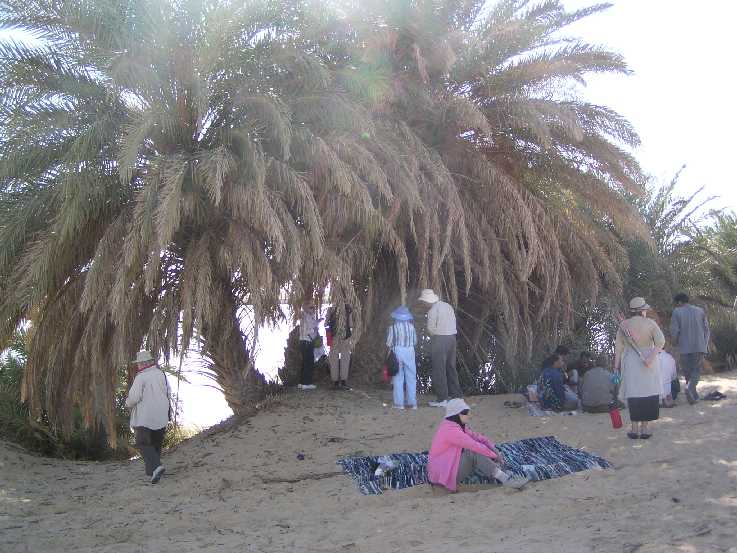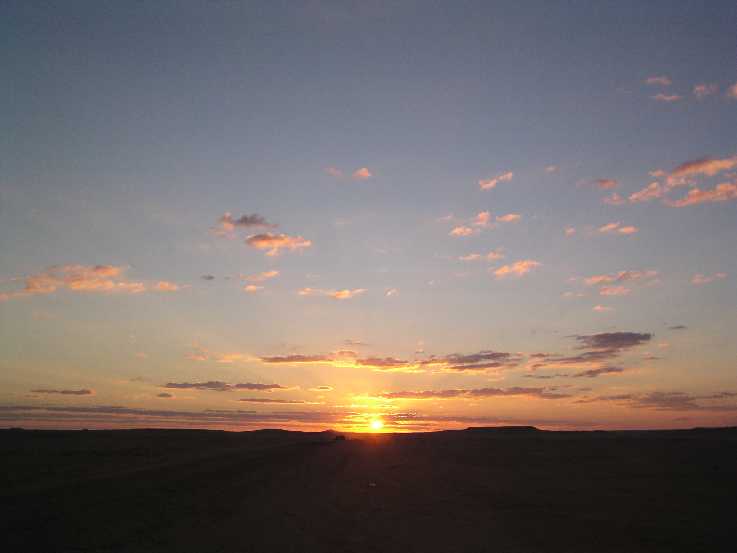Matrouh - Siwa escort change
All the way from Cairo to Siwa, we had a military escort to ensure our safety. One of the places the escort changed was a lonely cantina ('Uncle Saeyd - Soft Drinks - Tea - Ammo') half way from the coast to Siwa.
Siwa Shali
Siwa is near the western border of Egypt. A fortress of salt and mud brick called 'Shali' ('The Town') was built starting in 1203 AD. Torrential rains largely destroyed it in 1926 but the remains can be seen in the back of the photo.
Traditional Shawl
What the fortress used to look like is shown in a large relief next to the central square. Passing in front of it is a donkey cart (the major form of transportation here) with a veiled woman wearing the grey shawl that is traditional in the area.
Mountain of the Dead
A hill near the town is called the 'Mountain of the Dead' and as the name implies contains many tombs. The entrance to a small one is shown here. We saw several slightly larger tombs, one with lovely paintings which was the resting place of a wealthy Greek man who had married an Egyptian and converted to the ancient Egyptian religion. In another, 8 or so of us crowded in to see the relief carvings and it was something of a shock when our guide Tamer pointed out that the alcoves directly behind us contained a number of mummies, wrapped, unwrapped, and some in pieces. As usual, no photos were permitted inside; the light damages the paintings.
Temple of the Oracle
Siwa was famous from antiquity as the site of many springs. Also famed was the Temple of the Oracle, built in the 6th-7th C BC. When Alexander the Great invaded Egypt in 331 BC, he made an 8-day, nearly deadly journey across the desert (along the same route we took in an afternoon), so that he could ask the Oracle if he was the son of a god. When he exited the temple, he said that he would reveal the answer only to his mother, but it is assumed the Oracle's answer was Yes.
Siwa Donkey Carts
We went to the Temple via donkey carts, which fit more easily through the narrow streets than cars. In a bizarre mix of technology and culture, we are here accompanied by our military escort car and our guide Tamer on the bicycle is talking on his cell phone. We had two guides both named Tamer during our time in the Western Desert; both were extremely knowledgeable and invaluable. We called them Tamer and Tamer2.
Great Sand Sea
Our first off-road trek was just a few hours for fun in the Great Sand Sea. Our 4x4's raced at speeds of about 80 km/hr, zigzagging madly through the sand so as not to get stuck; some of the drivers were quite competitive (but they were all careful and experienced).
Car Tobogganing
At one point the cars stopped at what appeared to be a cliff, and then one by one disappeared over the edge. It was quite exciting as we more or less slid down the steep slope.
Roberta Tobogganing
At another stop Tamer pulled out a sand-surf board. He tried surfing down the slope, not too successfully. Then our tour helper Hany tried sitting down on the board but also fell off (he is to the lower right). Finally Roberta Shaw, our Egyptologist from the ROM, showed them how we Canadians can toboggan.
Hotel
Our hotel was remarkably pleasant; it was just completed a few months ago. A pool ran the entire length of the resort. Each little mud-brick 'house' like this contained 4 rooms, each with its own entrance and ensuite. The water smelled slightly sulphuric. A nearby hill is famed for the therapeutic quality of the sand and rheumatic people come even from Europe to be buried in the sand (up to the neck) for several hours at a time; it may have something to do with sulphur in the sand.
Hotel Bar
Although there was a lovely elegant restaurant with cloth tablecloths etc, drinks could be served outside in this tent for those who didn't mind sitting on low cushions. We never ate outside - some people thought it was too cool. The Egyptians in the group kept telling us it was 'freezing' but with a sweater it was quite pleasant (on the other hand at midday they were fine and I was too hot). The temperature varied from about 10 to 30 C, cooling off rapidly from about 3:30 p.m., but even at midday it was fine if one stayed in the shade. Notice Hany in the corner with his ubiquitous water pipe.
Dancers
One evening Berber men sang and danced for us, and the restaurant staff who were mostly Nubian also danced, showing us the difference. Without flash, their dance is a ghostly one.
Siwa - Bahariya Road
After a few days in Siwa, we set out across the desert towards the large oasis of Bahariya. A new highway is being built next to the old one, but the old one is not too bad - something like an Ontario backwoods gravel road. However, the sand keeps encroaching and the road needs to be dug out as you can see has happened here. Special permission is required to travel in this part of the desert and apparently we were the first Canadians to do so.
Bahrein Western Lake
At one of the military checkpoints, we turned off-road and journeyed to the oasis of Bahrein. The oases in this area were inhabited in antiquity but the water became too salty and the oases were abandoned. There are two spring-fed lakes at Bahrein, which is what the name means.
Bahrein Tombs
Many unexcavated tombs from Greco-Roman times are near the western lake at Bahrein. The photo shows just a few of these tombs that riddle the area.
Skull
As we wandered among the tombs, our feet crunched on potsherds and bones. Someone picked up something and asked Tamer what it was. He turned it over and showed her the teeth - "It's a human jawbone."
Nuwamisa Picnic
From Bahrein we went, still very much off-road, to Nuwamisa, which means Mosquito Lake, another abandoned oasis. The mosquitoes were noticeable if one got too close to the vegetation but the shade was lovely for our picnic lunch.
Bahariya Sunset
From Nuwamisa it was a short drive (once we got one car unstuck from the sand) back to the road and thence to the oasis of Bahariya where we stopped in one of the towns for the night. In the same hotel, a Fox TV crew was staying while they filmed a special on the Golden Mummies of Bahariya. While we could not visit the excavation site, we did see a number of these Greco-Roman mummies with the elaborate wrappings typical of the period and gilded cartonnage masks.
